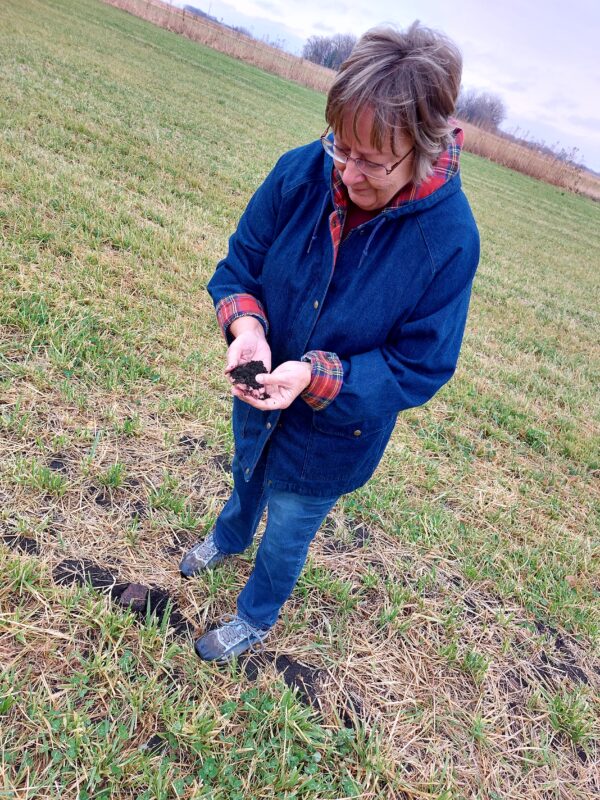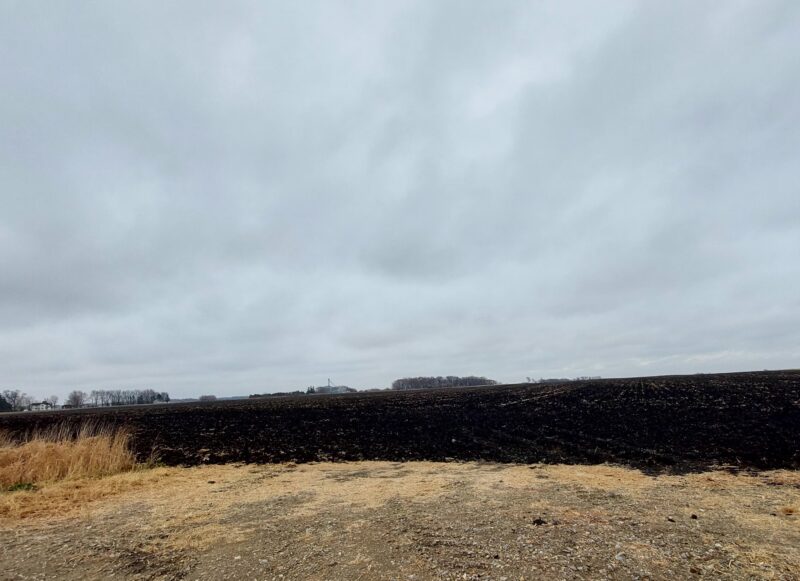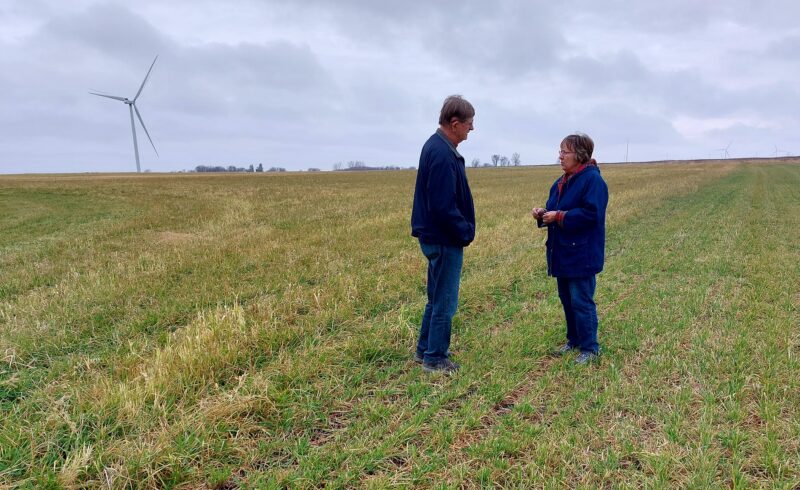Meg Nielsen and her husband Glenn (Southern MN) recently transitioned 50 acres of formerly cropped fields into permanent cover and have been readying infrastructure to support grazing livestock on the land this year.

From the reduction in energy-intensive corn and soybean production to the re-establishment of permanent root systems to the soil health benefits from managed grazing, Meg and Glenn are implementing a high-impact climate solution for the long-term. We asked Meg to share more about why she and Glenn decided to make this move and how they’re going about the process of transformation on the land. Here’s Meg’s account in her own words:
“We have always been concerned about our changing climate and the destruction of the environment. In 2018 I interviewed an anesthesiologist who had purchased a small farm to grow healthy food, because every day in his job he saw how processed foods were making people sick. I recognized then, even more strongly, the connections between healthy soil, healthy people and a healthy planet. And I realized that we had land and we could do something positive to implement change. Once decided, there has been no turning back, even though we know that because we are in our 70s, we may not see the end of the process we have begun.

We have had a lot to learn, but we have been influenced and helped along the way by others who care deeply for the earth – people at the Soil and Water Conservation District (SWCD) office, Climate Land Leaders, and other non-profit groups. We have read books and attended gatherings of like-minded folks. And finally, there just seems to be something deeply wrong about compressing the soil – that beautiful black Minnesota soil formed over millennia – with machines as big as houses and dousing it with chemical sprays that obliterate life. If we aren’t part of the solution, we are part of the problem.
The first step to healthy soil and the healthy food that comes from it is to put roots in the ground (forbes, bromes, cereal grains, clover), to stop bathing it in chemicals, and to get microbes and bacteria back where they belong in the soil. We started by addressing where and how the water flows. In 2020 we got an Environmental Quality Incentives Program (EQIP) grant to restructure an existing waterway. We also joined Climate Land Leaders, then a new initiative of Sharing Our Roots. In 2021 we worked with Ecological Design to formulate a plan to transition our acres. We planted more than 300 trees that year and started a small elderberry nursery. We also moved 50 of our 115 rented acres from a conventional corn/soybean farmer to a grazer who raises grass-fed sheep, cattle and hogs. In 2022 we planted another 200 trees as a riparian buffer, and the grazier planted a “succotash” mixture which he harvested as feed for the hogs on his home place and baled as winter food for his cattle. More elderberry shoots were added to the nursery.

This year we also got a water quality certification through the Minnesota Agricultural Water Quality Certification Program (MAWQCP) and received a $1,000 grant to help with the transition. We are working on getting water from our homestead well to places where next season sheep will shelter. And, most recently we have signed contracts for a Conservation Reserve Program (CRP) wetland restoration/wet prairie in a low-lying area, and two CRP windbreaks (with 600 trees) to further protect against chemical drift. In the future we hope to install enough solar panels to power the farm and sell back to the utility.”

We are eagerly following these Climate Land Leaders’ progress on the land! Meg recently shared this update with the cohort as she was reflecting on the transformation underway: “It’s important to stay flexible and open to what unfolds within a given year…. If things don’t happen as or when you hoped, sometimes the waiting can open doors to new possibilities. For instance, because we met on-site with a planner recommended by the Natural Resources Conservation Office (NRCS) office, our grazier got some new ideas about where new water lines would need to go. The site visit and new ideas from the planner helped get approval from MAWQCP for a grant application. We just received confirmation that our planned $6,000+ water system for the grazing animals will receive up to $5,000 in grant dollars. That will be a huge help toward getting animals out into the field in 2023.”